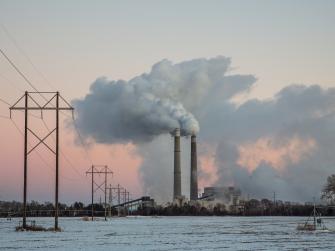How economics solved acid rain

Working with business and government leaders, we showed how market incentives can be levers for change. Cap and trade helped power plants find a new way to lower emissions.
Problem
Decades ago, sulfur dioxide pollution — mostly from coal-fired power plants — was causing acid rain and snow, killing aquatic life and forests. A debate ensued: Regulation would direct all plant owners to cut pollution by a set amount, but this method, critics argued, would be costly and ignore the needs of local plant operators.
Solution
We devised a cap-and-trade approach, written into the 1990 U.S. Clean Air Act. It required cutting overall sulfur emissions in half, but let each company decide how to make the cuts. Power plants that lowered their pollution more than required could sell those extra allowances to other plants. A new commodities market was born.
Results
Sulfur emissions went down faster than predicted and at one-fourth of the projected cost. Since its launch, cap and trade for acid rain has been regarded widely as highly effective at solving the problem in a flexible, innovative way.
Lasting impact
Since this first historic success, we've expanded our efforts to help create new market mechanisms that account for the impact to our environment. This solution has served as the inspiration behind one of the most powerful tools we have to fight climate change: carbon markets.
Updated: September 2018
Media perspective
[T]he greatest green success story of the past decade.
The Economist
MEDIA CONTACT
Raul Arce Contreras
(240) 480-1545 (mobile)










